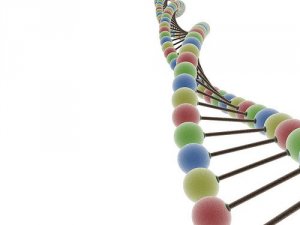A gene that triggers the formation of the nervous system has been discovered
Last reviewed: 16.05.2018

All iLive content is medically reviewed or fact checked to ensure as much factual accuracy as possible.
We have strict sourcing guidelines and only link to reputable media sites, academic research institutions and, whenever possible, medically peer reviewed studies. Note that the numbers in parentheses ([1], [2], etc.) are clickable links to these studies.
If you feel that any of our content is inaccurate, out-of-date, or otherwise questionable, please select it and press Ctrl + Enter.

The hypothesis that the nervous system of the embryo forms itself, without specific signals, has not been confirmed. Japanese researchers have found a gene that triggers the transformation of germ cells into nerve cells.
In the process of embryo development, an important stage of formation of three germ layers is distinguished. In most multicellular organisms, at some stage the body of the embryo has a three-layer structure, and each of these layers - ectoderm, mesoderm and endoderm - is the precursor of a whole group of tissues. Thus, derivatives of the exoderm will perform integumentary and sensory functions in the future organism, that is, among other things, the ectoderm layer of the embryo gives rise to the entire nervous system.
Based on the results of studies of the formation of nervous tissue, a unique model was created, according to which nervous tissue is formed in the embryo in a passive way. In other words, when other development alternatives have already been exhausted, and there is no need to form various integumentary tissues, then it is the turn of the nervous tissue. This implies that there is no specific active signal to start this process: ectoderm cells contain several inhibitor proteins that restrain the development of nervous tissue. When everything else is formed, these inhibitors, figuratively speaking, let go of the reins, and the production of nervous tissue begins.
Researchers at the Center for Developmental Biology at the Institute of Physical and Chemical Research (RIKEN) have managed to challenge the model of passive neural tissue development. A group led by Yoshiki Sasai examined gene activity during the transformation of mouse embryonic neural tissue precursor cells. They found that the product of one gene, Zfp521, activates other genes involved in the process of creating neural tissue, even in the presence of proteins that these genes normally suppress.
When studying mouse embryos, it turned out that the localization of the Zfp521 protein in the embryo and the time of its activity are associated with the place where the transformation of the ectoderm into nervous tissue begins. If mouse embryos were injected with neuronal precursor cells with the Zfp521 protein gene switched off at an early stage of development, they could not integrate into the developing nervous system of the embryo. Subsequent molecular genetic analysis showed that this gene stimulates the transformation of the ectoderm into neuroectoderm, from which, in turn, the immediate precursors of neurons are obtained. The experiments of Japanese researchers are described in detail in a publication in the journal Nature.
Thus, nervous tissue is not formed passively and not "by itself", but under the influence of a specific active regulator, which initiates its formation. Deciphering the mechanism may prove extremely important for medicine if it is possible to show that the formation of nervous tissue in humans is initiated in exactly the same way.
